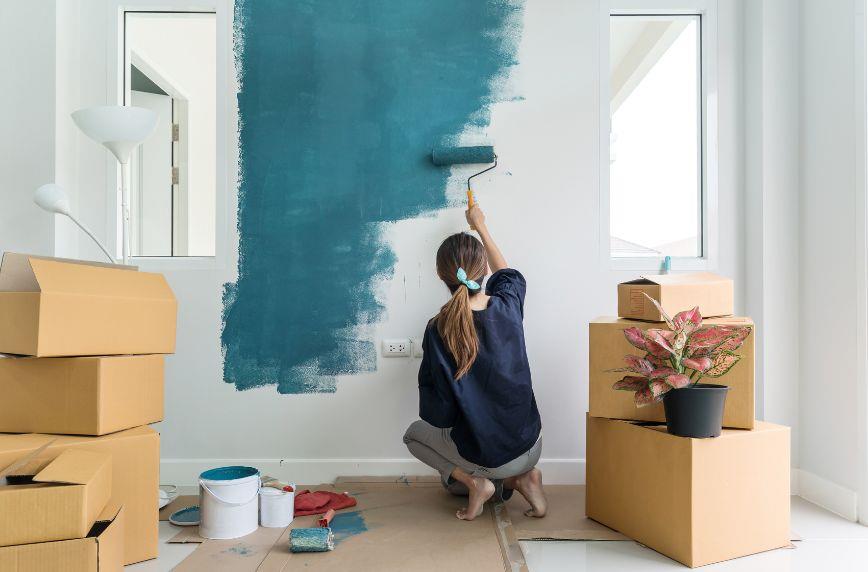A plain coat of paint can complete the interior design of any room. But choosing a different wall painting technique you can do yourself can further enhance and boost the overall look and feel of the room by adding texture and charm. You do not need expertise to try these techniques; they are relatively simple for beginners. Next time you’re revamping the interior of your home, consider the following wall paint methods.
Two-Toned Half-Painted Walls
The most uncomplicated wall painting technique on this list is painting a wall with two different colors in a horizontal method. Typically, this is perfect for when you have lower ceilings because it can make them appear higher. Ensure the two tones of color you choose contrast with each other well—keep the darker color on the bottom half of the wall and paint the top half first for cleaner lines. Use this simple method to fake modern architectural detail.
Painting Patterns With Stencils
Create the perfect pattern and design by painting with stencils. We may not all be perfect at freehand painting, so don’t feel bad about using a stencil to help you achieve the ultimate design. For this technique to work, you must tape the stencil to the wall to prevent movement. You should also watch how much paint you’re loading onto your brush to keep it from bleeding beneath the stencil and ruining your work.
Color Washing Paint Style
Color washing is a wall painting technique you can do yourself with a rag or sponge and glaze. Start by matching your wall color to the room’s flooring and avoid using a flat finish, or the glaze will absorb and dry too quickly. Apply a glaze over this coat of dried paint with a rag, using circular motions to create a soft and diffused look that appears inky. Pro tip: utilize different wiping motions with the glaze to blend the textures together better.
Rag Rolling Paint Technique
Rag rolling is similar to color washing, but you use a rolled rag over wet paint to add texture and a unique pattern to the wall. Usually, you see this technique in smaller rooms because it can make these spaces feel less small and cramped. This method is very easy to overdo, so ensure you are not rolling the rag over the wall too much—a good rule of thumb to follow is less is more.
If you don’t want to call a professional painter for this job, you can achieve great results by doing it yourself using one of the above methods. It may be intimidating initially, but painting a room is simple once you get the specific technique down. What method will you use to add charm and texture to the interior of your home?
Are You a Professional?
Requests for your services are coming in left and right. Let’s connect and grow your business, together.


